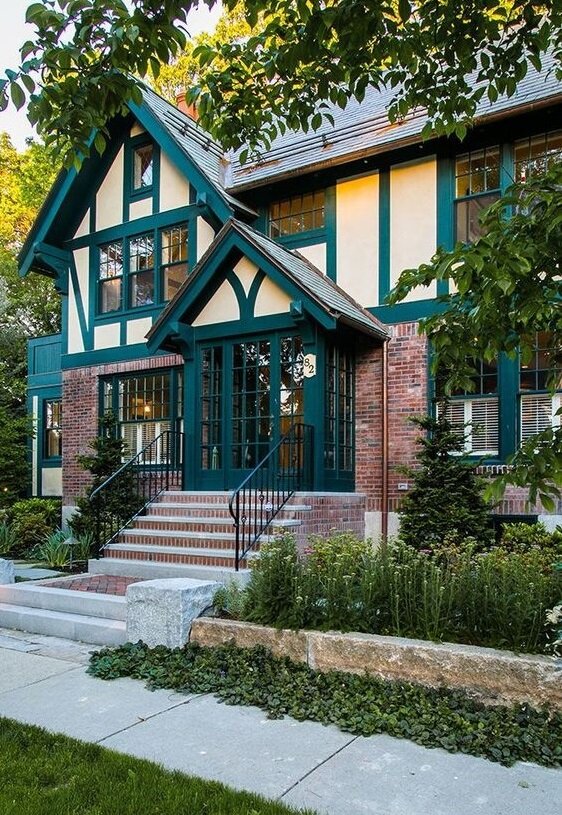#16580. Elegant Tudor Facade with Teal Detailing and Brick Foundation

Before us stands an exquisite example of Tudor architecture, where traditional half-timbering elements elegantly blend with modern solutions. The facade showcases the characteristic Tudor-style contrasting finish: creamy white walls framed by expressive dark teal wooden structural elements. The lower part of the building is clad in warm reddish-brown brick, creating a solid visual foundation and adding textural diversity.
The architectural composition of the facade is distinguished by its asymmetry and picturesque quality. The central entrance is accentuated by a small porch with a pointed roof, supporting the overall stylistic theme of the building. Particularly noteworthy are the numerous multi-paned windows, characteristic of Tudor architecture — they not only provide abundant natural light but also create a rhythmic visual pattern on the facade.
The facade design is enriched with numerous details: expressive brackets supporting the roof overhangs, elegant wrought iron railings framing the staircase leading to the entrance, and the complex roof geometry with multiple gables creating a dynamic silhouette.
Remarkably skillful is the combination of landscape design with architecture — stone retaining walls framing the entrance area create a smooth transition from architecture to nature, while carefully selected plants soften the geometric lines of the building.
When designing your own facade in a similar style, it's worth paying attention to the expressive play of color contrasts, authentic execution of half-timbering elements, and quality natural materials. A contemporary interpretation of Tudor style might include energy-efficient windows that preserve the historical appearance, and durable materials that mimic traditional finishes but require less maintenance.
Uncertain about exterior colors? AI suggests perfect harmony with style-matched material combinations.